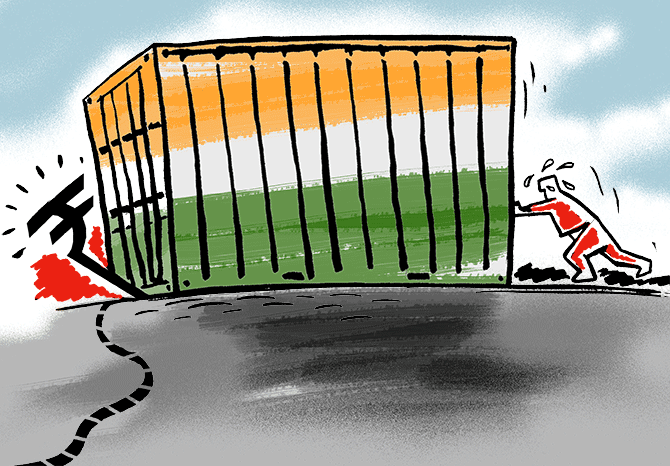India’s exports are becoming less vulnerable to changes in world demand and exchange rates, according to a publication titled ‘Re-examining Narratives: A Collection of Essays’, penned by chief economic advisor (CEA) V Anantha Nageswaran and his team.

The publication pointed out that this conclusion has been drawn from the fact that there has been a decrease in the income elasticity of exports to 3.44 during 2009–2022, from 5.67 during 1991–2008, and in the inverse price elasticity of exports to 0.4 from 2.7.
While a decline in elasticities is favourable in the presence of downside risks such as a decline in global demand and an appreciation of exchange rates, it may not be beneficial during boom periods.
“…would result in exports rising by a lower proportion in response to a rise in global demand or a depreciation of the exchange rate.
https://im.rediff.com/money/2023/dec/22dec-exports.jpg
"In this context, what is more important is to hedge against downside risks emerging from less favourable growth in world demand and relative prices,” the publication said.
The change in export elasticities has also been driven by a growing share of service exports, which have grown by 28 per cent above pre-pandemic levels.
They are found to be “relatively immune to global income fluctuations” as compared to merchandise trade.
“Not only are information technology services an area of comparative advantage, but these exports remained strong despite the global supply disruptions witnessed during the pandemic,” it said.
According to the CEA, India’s foreign trade has “boomed” due to reforms that happened over the past few decades.
Not only has its share increased in world exports, but a jump has been seen in the share of the country’s gross domestic product from around 15 per cent in the early 1990s to almost 50 per cent in 2022.

More recently, India’s exports — goods and services — doubled between 2020 and 2022, touching $770 billion, despite rising supply chain disruptions across the world.
This was mainly due to the diversion of trade from other countries in favour of Indian products, the increase in global commodity prices, and the post-pandemic rebound in global trade.
The publication further said that a deeper analysis has shown that there has been a progressive rise in the export of high-value goods and an increase in manufacturing global value chain participation.
“This shift has been catalysed by an ecosystem created through a series of comprehensive measures undertaken both in the manufacturing as well as foreign trade space by the government,” it said, adding that export targets have become achievable due to government-run schemes such as the production-linked incentive scheme, the new-age free trade agreements, along with fundamental drivers of exports like price competitiveness, access to markets, and the development of markets for niche products.











